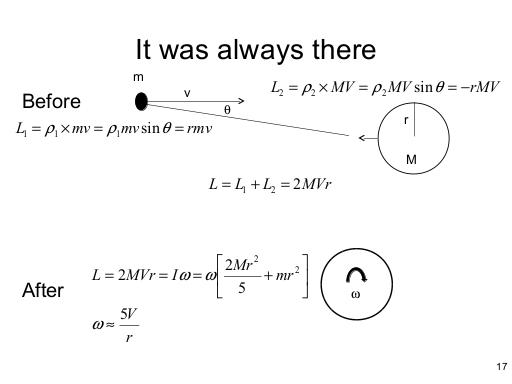
NOTES
In fact, it was always there: Since the objects are moving along paths that are not coincident, at least one of them has angular momentum no matter what point you use as your reference point. It's easiest to use the centre of mass as the reference, in which case, both objects have angular momentum. If we assume that one of the objects is significantly less massive than the other, the rotation of the bigger object after the collision is 5 times the bigger object's linear velocity, divided by the radius of the bigger object.
